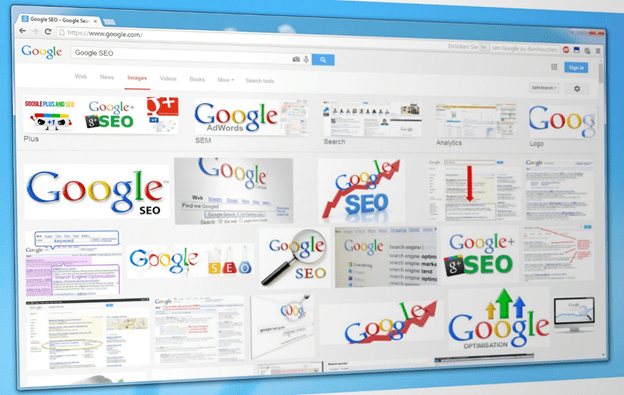Images are one of the most important and overlooked parts of search engine optimisation (SEO) today. Google has recently started paying significant attention to title and alt image tags, and using them as ranking factors in search engine results (SERPS). So, every blogger should provide a proper SEO for images that they would be ranked well in Google images search. What does it mean?
Every time we add a photo or graphic to our website or post the search engines will index them just as a readable content within a page. Since the search engines cannot “see” the image, you must tell them what it is about. And the more you tell, the more Google images will rank your pics and site at all.
So let’s first understand what the Google Images is and why it was implemented.
Google Images
Google Images is a search service founded by Google and introduced in July 2001 that offers to users to search the for images in the Web field. The keywords for the image search are sorted by the filename of the image, the link text attached to the image, and text adjacent to the image. When the user performs the search for an image, a thumbnail of every matching image is displayed in the results. When the user clicks on a thumbnail, the image is reflected in a box over the website that it came from. The user can then close the box and browse the website, or view the full-sized image.
When the Google search bot looks at your site, then Google image bot is seeking for some basic information that most bloggers often bypass when uploading an image.
Let’s look what information you should include in your image description.
Filename
When you download photos from your phone or camera DO NOT upload them to your blog with file names such as 1234.jpg – rename them. You should use descriptive text/keywords such as “cute grey kittens” rather than “1234.jpg.” Tell the search engines what your photo is about — ”cute grey kittens.” And ideally, the description should be the keywords you want to rank for.
TIP: Do not use underscores in your file name.
Hosting
Do not host your images on Photobucket or other photo websites. Why would you lead those potential readers to a site which isn’t yours? Upload all your images to your blog, so all those image searches are pointed to your article. It will provide more traffic to your resources.
Title
I always make my title tag and ALT TEXT the same keywords – they should be your targeted keywords, i.e., “cute grey kittens.:
Alternate Text
Again, it should be the keyword(s) you are targeting and enter the text here too. It is the information that the search engines look for and it tells them what your image is about. If you are using an image in a widget your code should look like this:

Caption
It describes your image and this text will appear under your images within your post. It’s a good way to grab a readers attention to pictures and divide your post into some parts. It will improve the readability and increase the time users spend on your page.
Description
You can use some similar keyword(s) and semantic synonyms used for my title and ALT TEXT here too.
Between that, don’t overuse keywords, try avoid repetition, and use grammar checker to avoid the unreadable look of text.
Surrounding text
You know that content is king and supporting text immediately surrounding your image will give it an SEO boost. It means that you content subject and images should be related, only then they will work together.
This is the bare bone basics on how to optimize images for Google that will make not only your pictures but also blog posts ranking for search engines higher.



